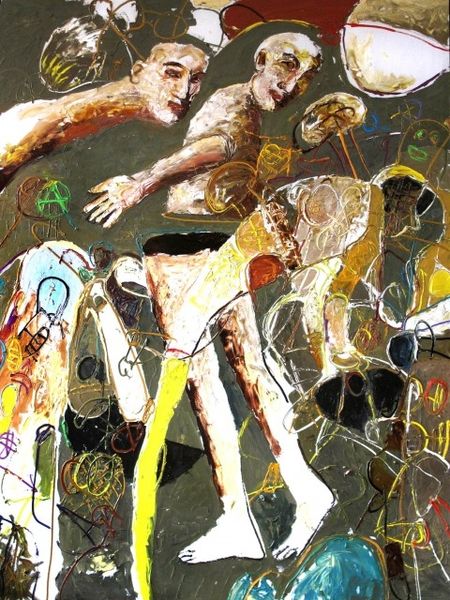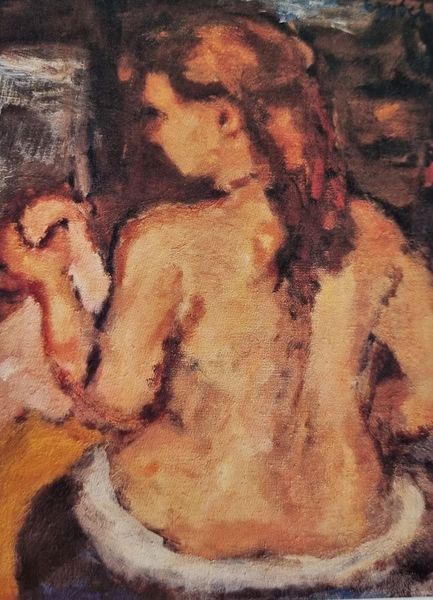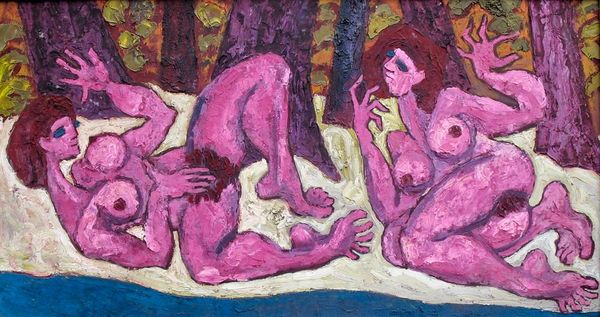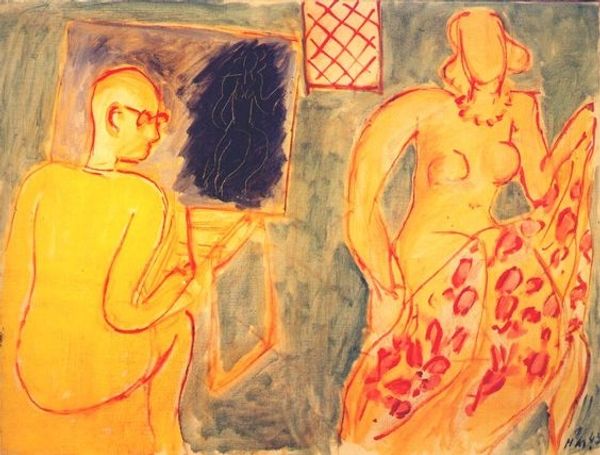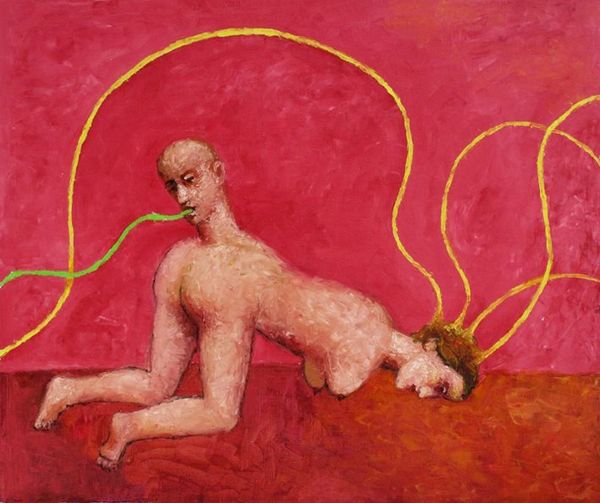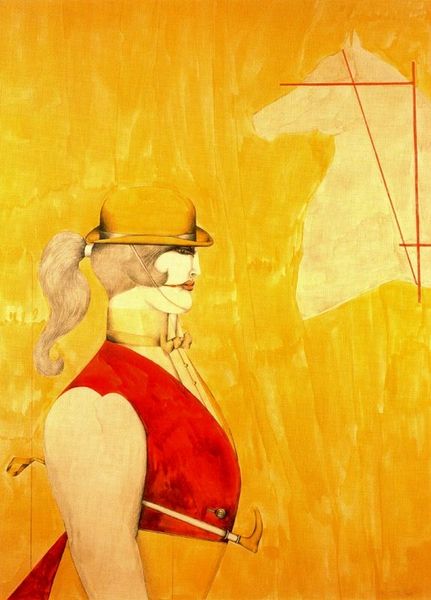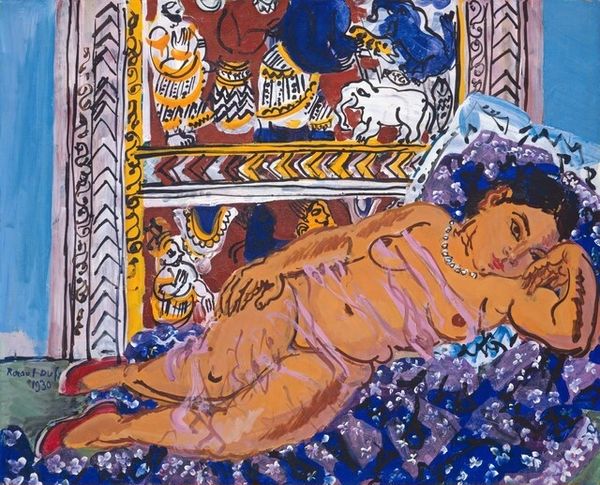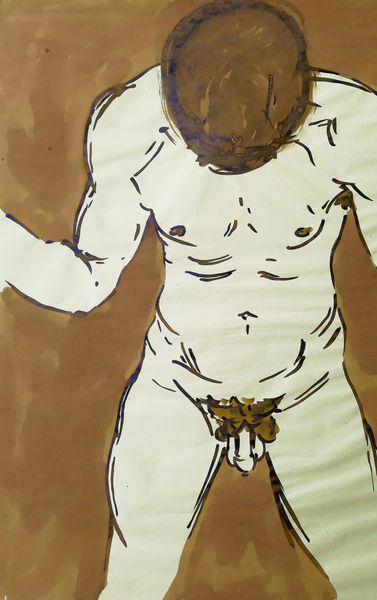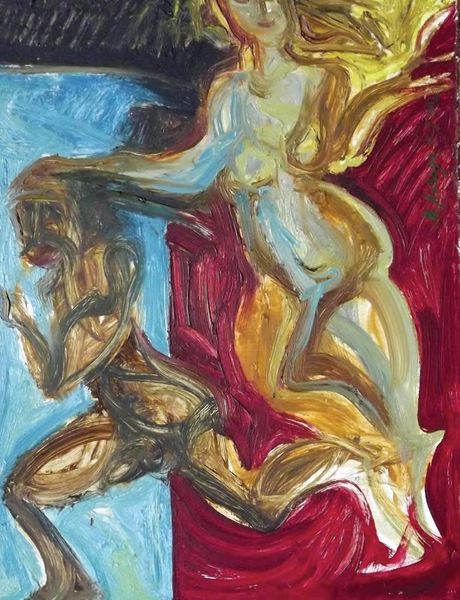
#
abstract painting
#
graffiti art
#
painted
#
possibly oil pastel
#
handmade artwork painting
#
neo expressionist
#
acrylic on canvas
#
spray can art
#
paint stroke
#
painting art
Copyright: Henri Matisse,Fair Use
Editor: Here we have Henri Matisse’s "Woman with a Necklace," painted in 1942. There’s a rawness to it, the red background so vivid, the figure almost hastily sketched. It’s both alluring and unsettling. How do you interpret this work? Curator: It's vital to understand this painting in the context of World War II. Matisse, despite facing immense pressure, remained in France. This work, with its bold colors and almost defiant simplicity, can be seen as an act of resistance. Consider the "necklace" – is it merely an adornment, or a symbol of the constraints and expectations placed upon women, particularly during wartime when traditional roles were upended? The facelessness adds another layer, depersonalizing the figure, perhaps speaking to the loss of identity under oppressive regimes. What does the use of red evoke for you, especially during this tumultuous time? Editor: That’s a powerful perspective. The red does feel almost like an alarm, or even the color of blood, hinting at violence. The facelessness, as you pointed out, could symbolize a loss of individuality under the Nazi regime. So, is Matisse subtly commenting on the socio-political climate through what appears to be a simple portrait? Curator: Exactly! He's using the visual language of Fauvism, known for its bold colors and flattened perspectives, not just for aesthetic reasons, but to convey deeper emotional and political truths. The woman, stripped of her individual features, becomes an every-woman, bearing the weight of the era. How does this interpretation change your initial understanding of the painting's mood? Editor: It shifts it completely. Initially, I saw only an incomplete portrait. Now, it’s a poignant commentary on wartime identity and oppression. Curator: And that’s the power of contextualizing art! Seeing it as a product of its time, shaped by the political and social forces at play. Editor: Thank you, I never would have noticed that without your analysis. Curator: Art History opens a pathway to understand our own History.
Comments
No comments
Be the first to comment and join the conversation on the ultimate creative platform.
